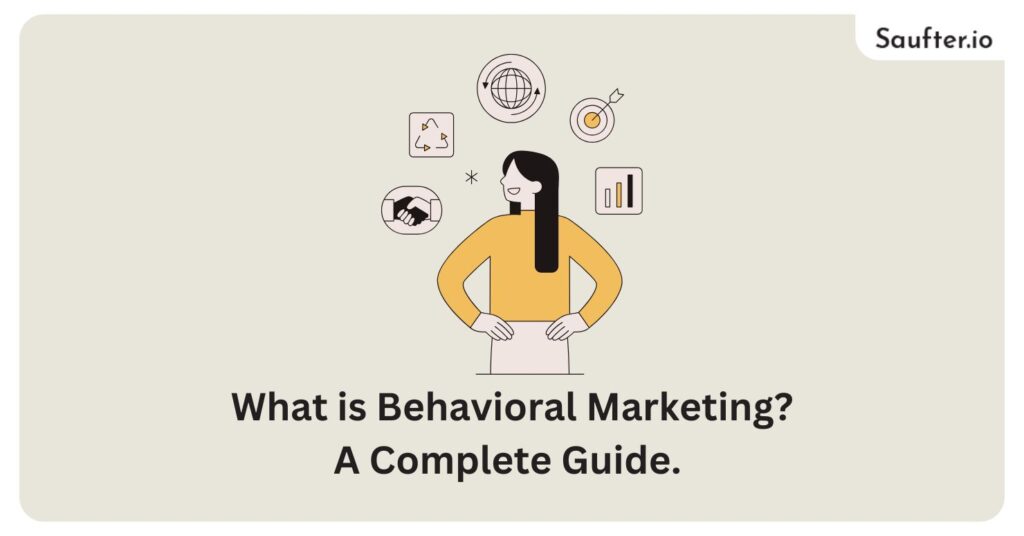Last Updated: January 2026
Behavioral marketing has emerged as a powerful tool in today’s digital landscape, allowing businesses to deliver highly personalized experiences based on a user’s actions, preferences, and habits.
In fact, studies reveal that 80% of consumers are more likely to purchase from brands that offer personalized experiences. By understanding and leveraging behavioral patterns, companies can build stronger connections with their audience, improve engagement, and drive conversions.
This guide will explore what is behavioral marketing, how it works, and why it’s a game-changer for modern businesses.
What is Behavioral Marketing?
The answer is behavioral marketing is a type of marketing that uses information about the online activity of individuals instead of just geographic or other demographic data to segment audiences. Its aim is to learn about users and use that information to provide relevant and personalized content.
Key Aspects of Behavioral Marketing
- Behavior Over Assumptions: Where fairly conventional marketing may have targeted age, gender, or location, behavioral marketing identifies specific actions like browsing history, purchase behavior, and time spent on a website.
- User-Centric Approach: It focuses on individual user needs and interests, showing users the content, ads, or recommendations that matter to them.
With this method, both the business and the consumer win. While consumers receive marketing aligned with their needs, they get less pushy, spammy ads and more relevant content that translates to engagement and conversion.
Why Monitoring User Behavior is Essential for Marketing Success
There are many key advantages to tracking user behavior in your marketing operations:
Tailored Advertising
With behavioral insights, you can tailor ads efficiently. Platforms like Google Ads, and Facebook Ads utilize large quantities of personal and behavioral data to aim your audience and engage users who really want your product, ensuring that your campaigns are more effective.
Attracting Warm Leads
Analyzing behavioral data gives you powerful insight into a user’s preferences, interests, and place in the buyer’s journey. This helps find leads that are more likely to convert, all at a lower cost.
Boosting Sales
Behavioral marketing drives sales by bringing your products in front of an interested audience at the right time. With the user behavior patterns, your sales team can be more productive and it can generate more leads with better accuracy.

Organizations that utilize consumer behavior data to gain insights achieve 85% higher sales growth compared to their competitors.
Building Stronger Relationships
Swipe left on behavioral marketing, it’s more than selling. It allows you to provide content that aligns with the requirements and preferences of your audience. It is through this understanding of user behavior that you can form valuable connections and provide value when it matters most, building loyalty and trust.
The Three Pillars of Behavioral Marketing: Data, Segmentation, and Application
To accomplish this, behavioral marketing relies on integrating three key activities, including collecting and analyzing data, segmenting the audience, and applying the data. With multiple channels, each phase can overlap, making it a seamless process!
Now, let’s take a closer look at each stage:
Phase 1: Data Collection and Analysis
Behavioral marketing begins with gathering data from various channels, such as:
- Social media platforms
- Search engines
- Websites
- Mobile applications
- Emails
- Chatbots
Current technologies that are used by social media platforms, online stores, email services and apps allow them to collect enormous amounts of user data. This creates a massive amount of data that enables companies to serve very relevant content and targeted offers without having to invest more time.
What is Behavioral Data in Marketing
Behavioral data is the information related to the actions of customers (or users) initiated on your business through different touchpoints like website clicks, mobile app actions, online purchases, interactions with emails, or face-to-face visits to locations.
This data is often collected and owned by organizations, is predominantly first-party data and is a particularly valuable asset for obtaining accurate customer insights.
Phase 2: Audience Segmentation
This involves dividing users into groups by shared demographics and behavioral characteristics. That way, marketing messages are tailored, and not generic.
Platforms such as Facebook Ads semi-automate this process by enabling marketers at the very least to pick audience interests and behaviours, while algorithms do the segmentation at a granular level.
Google Analytics also offers in-depth insights, such as what users viewed on your site and even what they queried in search results, to allow for precise display and retargeting campaigns.
Segmentation is simple for email marketing. You can segment the subscribers, for example, those who have not made a purchase yet or those who have made a purchase recently and send messages according to the audience.
Phase 3: Applying the Data
This last step is to take these insights and apply them to personalized ads, emails, or other marketing messages. For instance:
- Ads can be targeted to users according to their online activity.
- Emails can provide personalized recommendations based on buying patterns.
- Users who abandoned carts or browsed specific products can be re-engaged with retargeting campaigns.

Even a study says that nearly half (49%) of customers are more likely to make repeat purchases following a personalized shopping experience.
By using the behavioral data correctly, businesses could design campaigns that could make an impact and connect with the audience leading towards better engagement and results.
Types of Behavioral Marketing
Behavioral marketing offers owners insights on a real-time basis on what makes their customers tick, thereby helping them develop a personalized marketing strategy that drives up sales.
Here are the most effective behavioral marketing tactics to help you do so.
1. Product Recommendations
Shoppers who click on recommendations are 4.5 times more likely to add items to their cart and finalize their purchase. Make product recommendations based on behavioural marketing data.
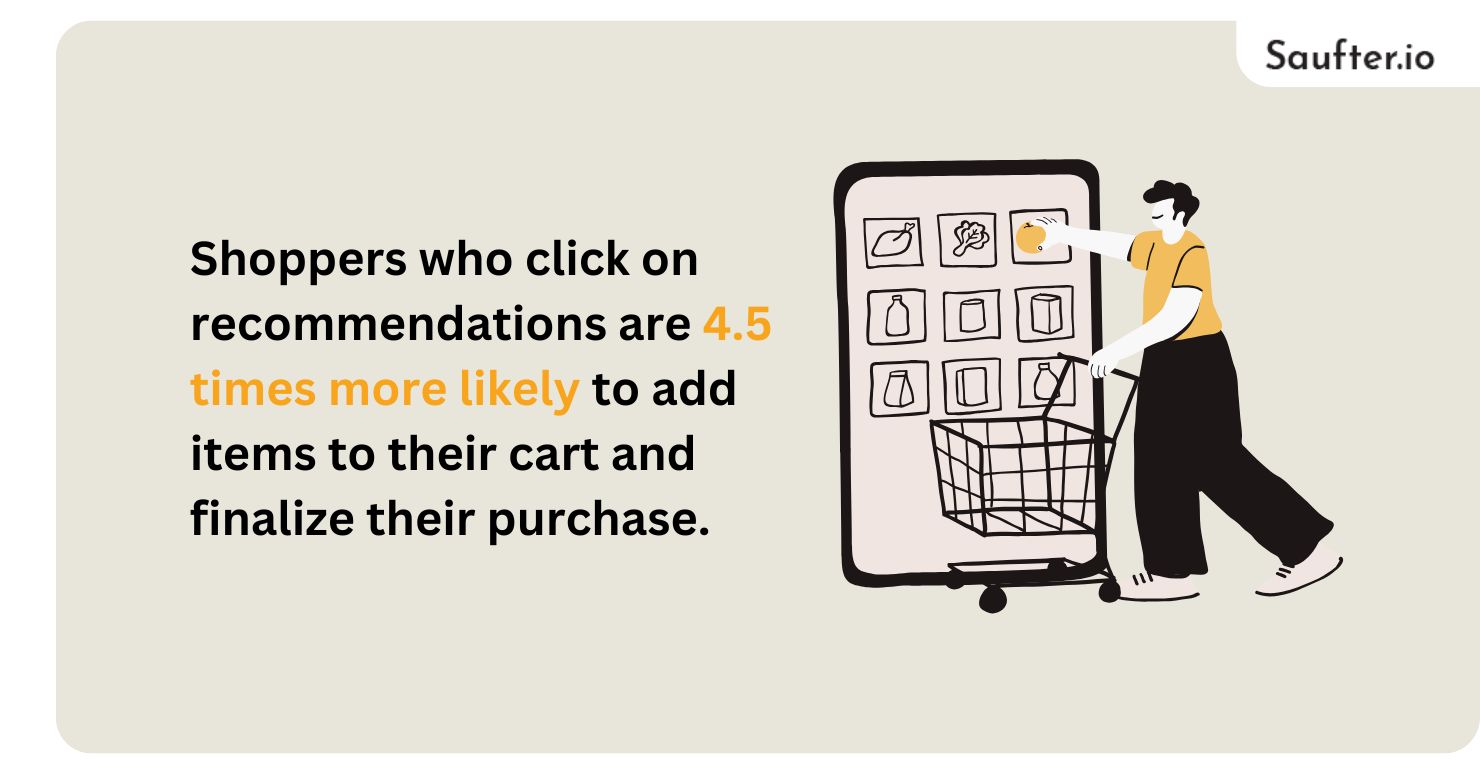
There are specialised tools that can be connected to your online store to analyse customer behaviors to guess what they could need or want.
These systems can send targeted messages automatically such as “Suggested for you” or “See your personalized recommendations.”
You can also create personalized recommendations shopping process where you can use upselling and cross-selling strategies. Using session data and cart contents, these methods create a sense of urgency for customers to add complementary or premium items to their orders. For instance:
- A beauty company might propose upgrading a simple skincare kit to a deluxe day-and-night package.
- An apparel retailer might suggest a new pack of dress socks to go with a freshly purchased pair of shoes.
Apps such as Frequently Bought Together leverage behavioral data to recommend products that not only improve customer satisfaction but also cart value.
2. Email Marketing
With behavioral data, email campaigns can become next-level instruments for targeted messaging. For example:
- Abandoned Cart Emails: Some marketing automation platforms can be set to follow up with anyone who added something to their shopping cart but then didn’t buy it.
- Personalized Content: Analyzing email interaction provides you with insight into the content that matters most to each customer.
For instance, a pet supply company could create a promo code to receive a discount when signing up and then send a welcome email with links to valuable resources such as a first-time puppy owner guide, cat litter mess tips, chewing toy safety tips, and little pet activities.
Follow-up emails can be tailored based on user clicks:
- If a customer clicks on the puppy guide, they are subsequently served additional resources and product recommendations for dog owners.
- So a user who indicates they want small-pet content would see updates about rodents and other small animals.
3. Behavioral Advertising
Platforms such as Google and Facebook allow brands to create advertisements and target them to specific audience segments based on various behavioral criteria, such as browsing behavior, search history, and previous purchases.
- Retargeting Ads: These ads bring users back by displaying things they’ve already looked at. To illustrate, a company will implement cookies on half of its site to keep track of visitors, and when users venture to other destinations, platforms such as Google Ads will populate them with segmented advertisements of the product they previously had expressed interest in.
- Search Engine Marketing (SEM): This means paying for prominent placements on search engine results pages where high-intent keywords are searching. A premium headphone brand, for example, might choose to pay to rank highly in results for searches like “best noise-cancelling headphones.”
The use of these strategies can leverage behavioral data, offering content that resonates with customers and uses quantifiable and tangible results.
Behavioral Marketing Examples
Here are some impactful case studies demonstrating the effectiveness of targeted marketing strategies:
1. Amazon
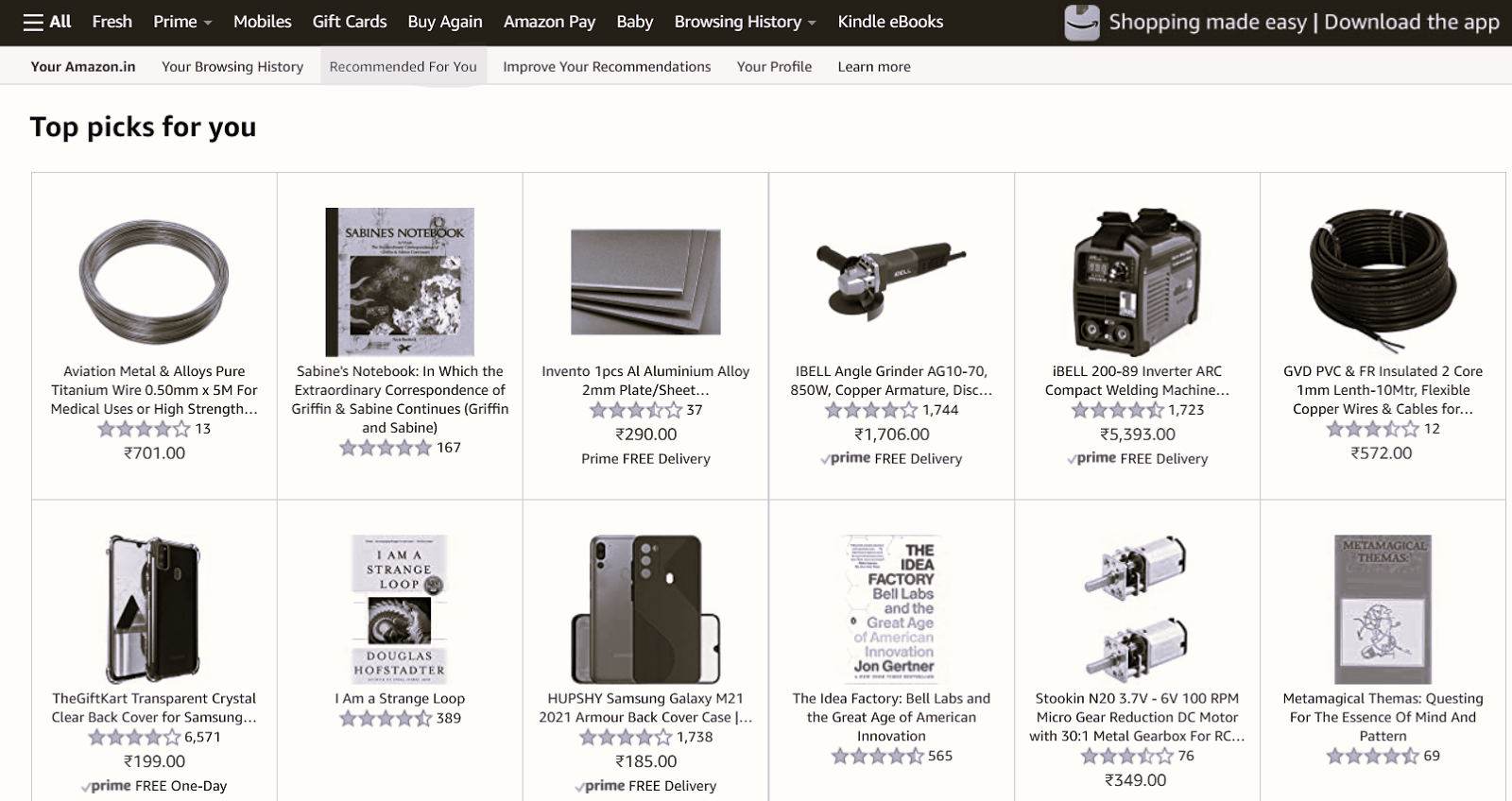
Amazon analyzes extensive shopping behavior data from its customers, including browsing history, purchase trends, and search queries, to offer targeted ads and personalized product recommendations.
Measuring products based on the features users have shown interest in and then splitting users based on their interests and buying patterns allows Amazon to send relevant promotions, personalized homepages, and customized suggestions to various users.
This not only enriches the shopping experience but also bolsters sales by personalizing the journey for each customer and making it more engaging.
2. Netflix
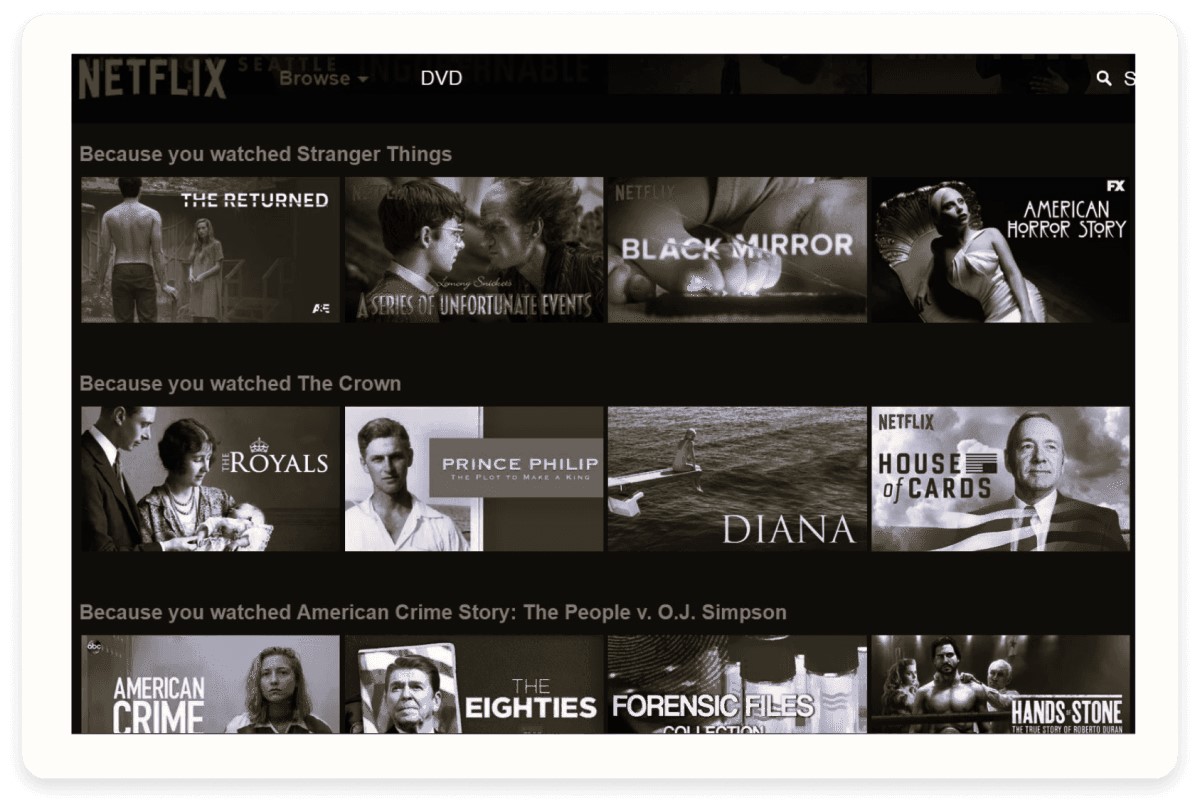
Netflix considers a lot of data about viewing behavior e.g. what you watch, with what frequency, what you interact with and what you search for.
By dividing viewers into segments by interest, genres, and media types (like series, movies, or documentaries), Netflix provides personalized recommendations, alerts users to new releases, and even produces content to the audience’s taste.
By consistently delivering relevant and interesting content, this data-driven approach increases the engagement of users while also minimizing churn.
3. Sephora
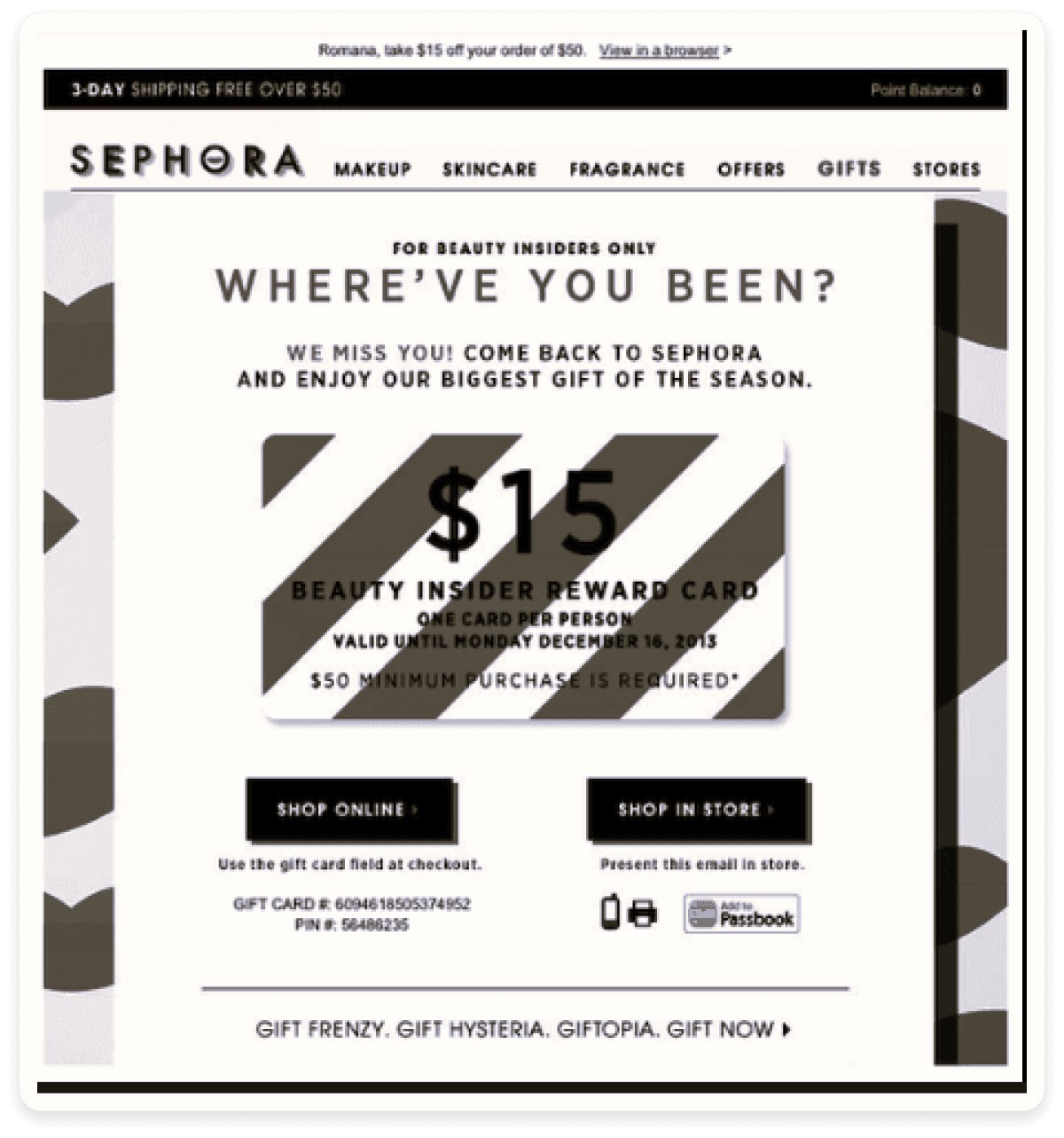
Sephora uses information from customers who interact through its mobile app, website and loyalty program. Based on data showing past purchases, product searches and wish list items, Sephora sends personalized emails, targeted recommendations and exclusive offers through the app.
So for example, if a customer has been viewing skincare products but hasn’t made a purchase, Sephora may send a reminder email along with a discount.
This personalized strategy increases customer engagement and significantly improves conversion rates.
Saufter: Best Email Marketing Automation Software

Saufter is a customer engagement and email marketing platform designed to analyze user behavior on your website or portal and their journey stages to provide campaign recommendations automatically.
For instance, it might suggest a “how-to” article for a feature users haven’t utilized. Each week, you receive fully drafted emails and in-app campaigns, requiring only your approval to launch.
Additionally, Saufter monitors your competitors, analyzing their latest blog posts to recommend content campaigns aligned with market trends.
Key Features:
- Automatically segment users into behavior-based cohorts.
- Generate email campaign suggestions to boost conversions and reduce churn.
- Provide SEO campaign recommendations for better visibility.
- Predict conversions and churn automatically to inform proactive strategies.
Conclusion
Behavioral marketing is revolutionizing the way businesses engage with their customers, offering personalized experiences that drive results. Research shows that businesses using behavioral marketing strategies see a 20% increase in revenue on average, highlighting its effectiveness in fostering customer loyalty and boosting conversions.
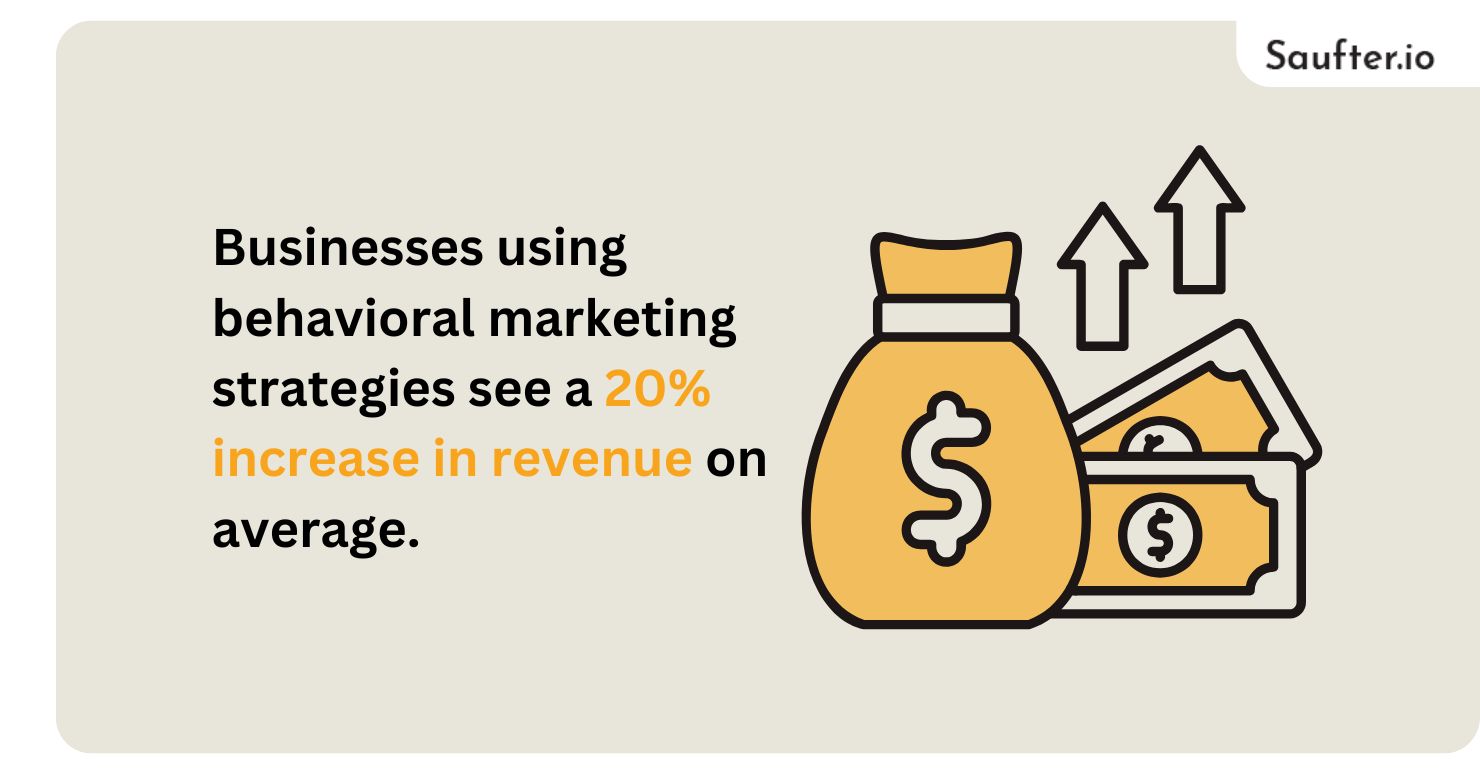
Tools like Saufter make this approach accessible by automating user segmentation, campaign suggestions, and competitor insights. With Saufter, businesses can focus on delivering meaningful, data-driven interactions without the heavy lifting.
As personalization becomes a key differentiator, leveraging behavioral marketing isn’t just about meeting expectations—it’s about exceeding them and staying ahead in a competitive landscape.
